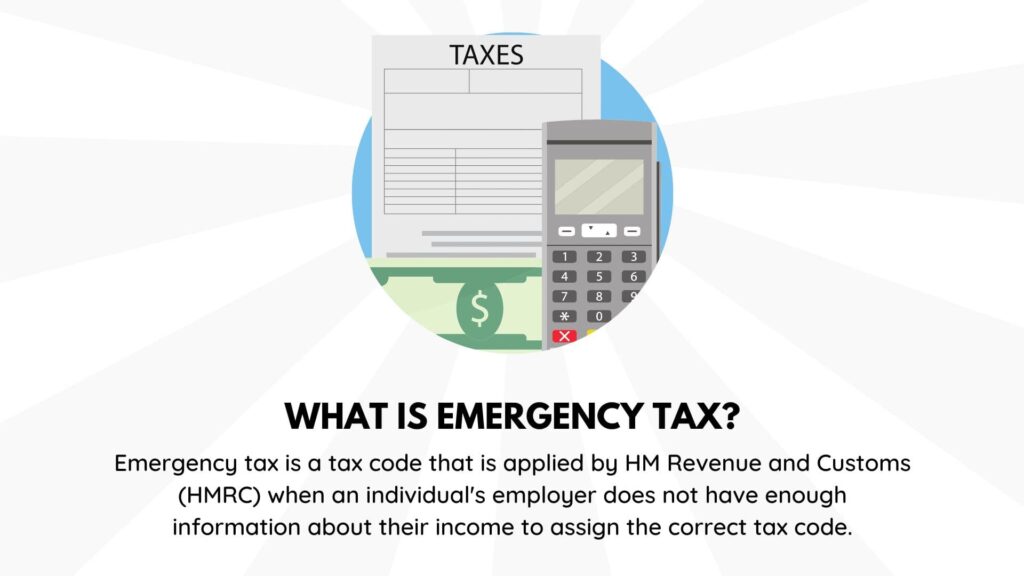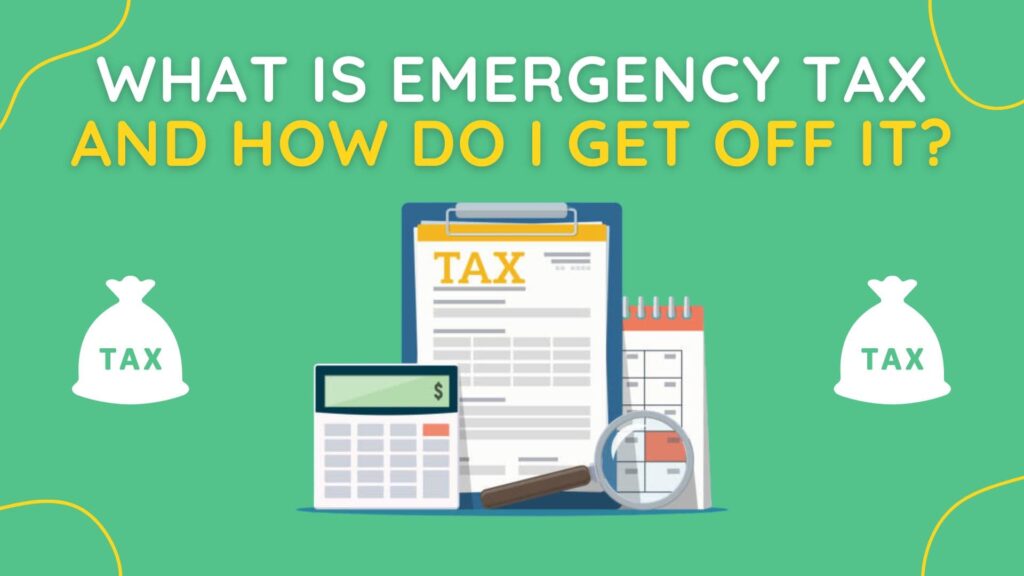
Sammie Ellard-King
I’m Sammie, a money expert and business owner passionate about helping you take control of your wallet. My mission with Up the Gains is to create a safe space to help improve your finances, cut your costs and make you feel good while doing it.
In this article, we’ll look at what is emergency tax, ways to stop it and how to get it back.
It’s happened to most of us. We’ve started a new role, and suddenly on our first paycheck, we’re hit with the dreaded emergency tax.
It’s never a pleasant experience as you are often left thinking about how you will get the money back.
Emergency tax will happen when HMRC needs the correct documents and places you on an emergency tax code until they do.
Table of Contents
What is emergency tax?

HMRC requires the correct information from you when you move jobs, or they are forced to grant you an emergency tax code to ensure you continue contributing to income tax and national insurance.
When leaving a job, you are granted a P45. This shows your new employer what tax code you are on and provides information on how much you’ve been paid so far that tax year.
If you still need to be given a P45, your employer will have to place you on the emergency tax until it works out what tax code you are on.
This usually lasts for a short time and can be rectified in weeks. It will take longer on rare occasions if a new tax code isn’t granted, but your employer should take care of this for you.
Why am I being emergency taxed?
There are lots of different reasons why you may have been put on emergency tax, including:
- You have just started receiving your State Pension
- You have begun a new job and haven’t got a P45
- You have just received your first ever paycheque in your life
- Your company has just started paying benefits like a company car
- You have just started as a company employee after being self-employed
- You claim marriage allowance, and this wasn’t flagged to HRMC
How much is emergency tax?
The emergency tax has been updated for the 22/23 tax year and now has new emergency tax codes for which you need to look out.
These include:
- 1257 W1
- 1257 M1
- 1257 X
The tax codes above are established if you’re paid monthly or weekly, so W1 is paid weekly, and M1 is paid monthly. 1257 in front of it relates to your personal allowance or tax-free allowance everyone in the UK receives.
Depending on how much you earn, you will be charged either 20% (Basic rate) or 40% (higher rate) on your entire paycheck. You could also just be charged for the amounts exceeding your personal tax allowance of £12,570, which is the same as in the last tax year.
How much extra emergency tax could you pay in these bands? Well, they differ quite a bit. Let’s take a look:
- The basic-rate bracket (up to £50,270) could pay an extra £2,514 in the 2022-23 tax year if they remain on an emergency tax code
- The higher-rate bracket (up to £50,270) could pay an extra £5,028 in the 2022-23 tax year if they remain on an emergency tax code
(Figures according to Which?)
The key here is that you could miss out on the personal tax allowance of £12,570 when on an emergency tax code.
How do I stop being on emergency tax?
To avoid being on emergency tax altogether, you will need to tell HRMC and your new employer as soon as possible.
You will need to inform them of your name and the tax registration number for your new employer or your pension provider.
Further key information will include the gross salary amount, your start date and how often you will get paid.
You will need an HMRC account to do this, and it can be done online. Make sure you wait to put the information in until you have finished your current role, as this can result in the wrong tax amounts being taken.

How to claim back emergency tax?
In most cases, you will not be required to claim your emergency tax back, and it will simply average out over your next few paychecks.
Sometimes if you are near the end of the tax year or if HMRC work out your tax to be incorrect, you may also receive a tax rebate via a cheque in the post.
If you still need to get more accurate information, you can either call HMRC and speak to a Tax Officer or submit a self-assessment.
FAQs
How do I avoid living on emergency tax without a P45?
Your best solution is to call HMRC and tell them you have not received a P45 from your employer. They will be able to issue one for you, but this may take some time as they will need to contact your previous employer. Your employer has a legal responsibility to process your P45, no matter the manner of your departure.
Does emergency tax get paid back?
Yes, it gets paid back into your salary over a few paychecks. Sometimes you can get a larger deduction in the next paycheck, meaning you get paid more. If you’re worried about this, it’s best to contact HMRC or speak to your employer.
How do I know if I’m due a tax refund?
You will receive a P60 or end-of-tax-year summary, which will state how much you have been paid vs the amount of tax you have paid. If there is a discrepancy, you will either receive a rebate or, if you have underpaid, will be asked to pay back the tax you owe.
Conclusion
So, what is emergency tax? It’s simply a type of tax code given to you when HMRC doesn’t have the correct information for you.
There are ways you can stop the emergency tax from happening to you, but you will need to have all of the relevant information.
If it does happen to you, do not panic, the tax will be paid back to you once they have assigned you a tax code. We understand this isn’t nice so if you’re worried at all, speak to your new employer, who will be able to look into it for you.
More Like This
Share this article with friends
Disclaimer: Content on this page is for informational purposes and does not constitute financial advice. Always do your own research before making a financially related decision.


